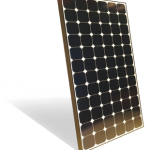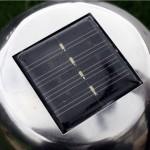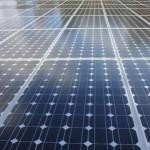Music can increase solar cell efficiency by 40%
We all know music feeds the soul, but according to scientists at two respected London educational establishments music also has an effect on the performance of experimental, low-cost zinc oxide solar cells, increasing their efficiency by a jaw-dropping 40%.
 A team of scientists from Queen Mary University and Imperial College London conducted a study recently into the performance of solar cells and found that sound vibrations in music can increase the solar cells’ power ouput.
A team of scientists from Queen Mary University and Imperial College London conducted a study recently into the performance of solar cells and found that sound vibrations in music can increase the solar cells’ power ouput.
It’s good news for fans of pop and rock, with these two particular genres enhancing energy generation due to their high pitched sounds by up to as much as 40%. Music with lower pitched sounds, like classical music for example, although still capable of increasing the cells’ output, wasn’t as successful.
The researchers grew billions of tiny rods (nanorods) which were made from zinc oxide. By covering them with an active polymer they were able to form a device that could convert sunlight into electricity.
The breakthrough means the efficiency of solar cells can be improved by using ambient or background noise found in many environments. Solar energy could therefore be used to power an even wider range of devises, such as solar powered laptops and air conditioning units, as well as electronic components on trains and buses.
The study, which was published last month in the journal Advanced Materials, discovered that even sound levels as low as 75 decibels – such as noise attributed to an office printer or a typical roadside noise – could improve test solar cell performance considerably.
Commenting on the findings, James Durrant, Professor of Photochemistry at Imperial’s Department of Chemistry said: “We thought the soundwaves, which produce random fluctuations, would cancel each other out and so didn’t expect to see any significant overall effect on the power output.
“The key for us was that not only that the random fluctuations from the sound didn't cancel each other out, but also that some frequencies of sound seemed really to amplify the solar cell output – so that the increase in power was a remarkably big effect considering how little sound energy we put in.”
By playing music rather than dull flat sounds the team were able to explore the effect of different pitches, eventually discovering that efficiency was greater when they played pop and rock compared to classical music, with the solar cells responding better to higher pitched sounds.
Co-author of the paper, Dr. Steve Dunn from Queen Mary University said the discovery was “a really exciting development that shows a similar set of physical properties can also enhance the performance of a photovoltaic solar cell.”
The majority of modern commercial solar cells are between 10-20% efficient. Increasing efficiency is a big focus for the solar industry with research and development an ongoing focus.
Find local, MSC certified Solar Installers
Start your quote
Find local, MSC certified Solar Installers















